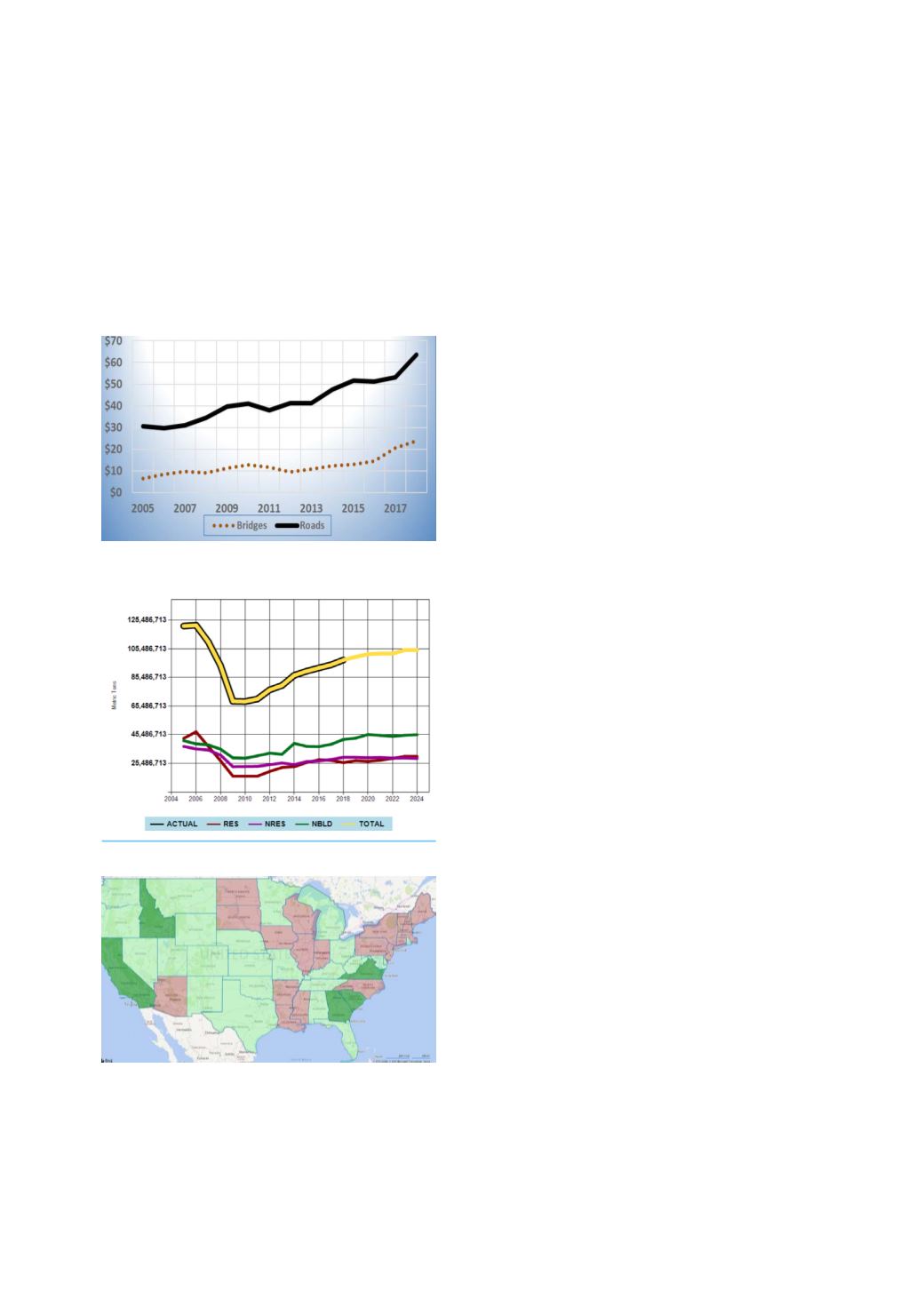
14
World Cement
North America 2019
With many years of growing tax receipts
at all levels of government and the growing
backlog of needs, there is now the ability
to fund more infrastructure work. SCMA’s
outlook for growing cement consumption
depends to a great extent on higher
non‑building demand. The gains are good but
not great because of the drag from higher
pension costs. These costs come first and
will put a dampener on higher public works
spending in those areas with high unfunded
pension liabilities, such as Illinois.
Construction input background
z
z
The main driver of construction growth will
be infrastructure.
z
z
Private work (residential and
non‑residential) will be flat to slightly down.
z
z
The ‘retail ice age’ is almost over.
z
z
States with high unfunded pension
liabilities will struggle to fund new public
works.
US cement demand outlook: 2019 to
2024
The US is past the post-tax cut initial growth
spurt and entering a period where the
longer‑term structural impact may be felt. This
phase, while less dramatic, has long legs and
will show up with continued strength in capital
investments among all classes in this segment
(i.e. machinery, structures, intellectual
investments, and new business formation).
The qualifier is that current pro‑growth
policies continue. Helping to maintain this
higher consumption track is the levelling off
of interest rates (at least for a while). With
the new tax rates and changes now evident
to everyone, the general movement of people
and businesses towards warmer, lower cost
areas will continue. This means the more than
60 year move to Sunbelt states will accelerate
but will also be more spread out, as those
states just North of Florida and Georgia will
capture more of the flow. The increased
attractiveness of most of the Mountain region
states should be added to this.
These economic and business changes
mean that all segments of construction
materials will do well, with residential and
non-residential spending plateauing at high
levels and non‑building providing the bulk of
materials growth over the next two to three
years. Residential is forecast to remain about
flat due to the high price of new housing, a
shift in millennial preferences for renting in
more urban areas, and the lack of adequate
down payments.
For non-residential construction, the
US is still in the disruptive throes of the
Amazon Effect. This is a huge structural
change for retail, and to a lesser extent for
other commercial activity, precluding any
large overall increase in demand from this
segment. The sub-segments of warehousing
and entertainment investments will increase to
almost balance out the decline of traditional
retail space. Non-building is doing well
currently and will do the best over the forecast
horizon. With the economy growing strongly for
several years, local conditions are good enough
Figure 9. Roads and bridges (2005 to 2018,
US$ billion).
Figure 10. US cement consumption 2016
−
2024.
Figure 11. Total percentage change in cement
demand by state (2019 to 2024). Source:
History USGS, SCMA forecast for portland and
blended cements in tonnes. SCMA estimates
used where USGS shows no values due to
propriety competitive conditions. Green > 0%,
Red <0% between 2019 and 2024.








